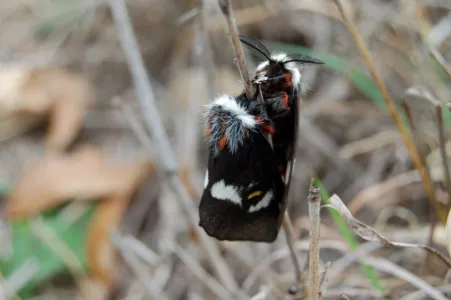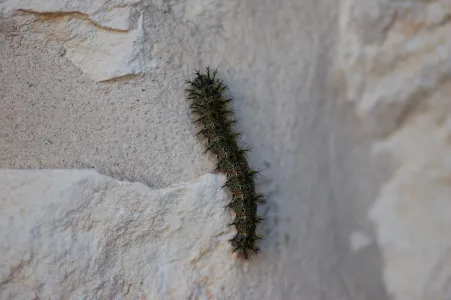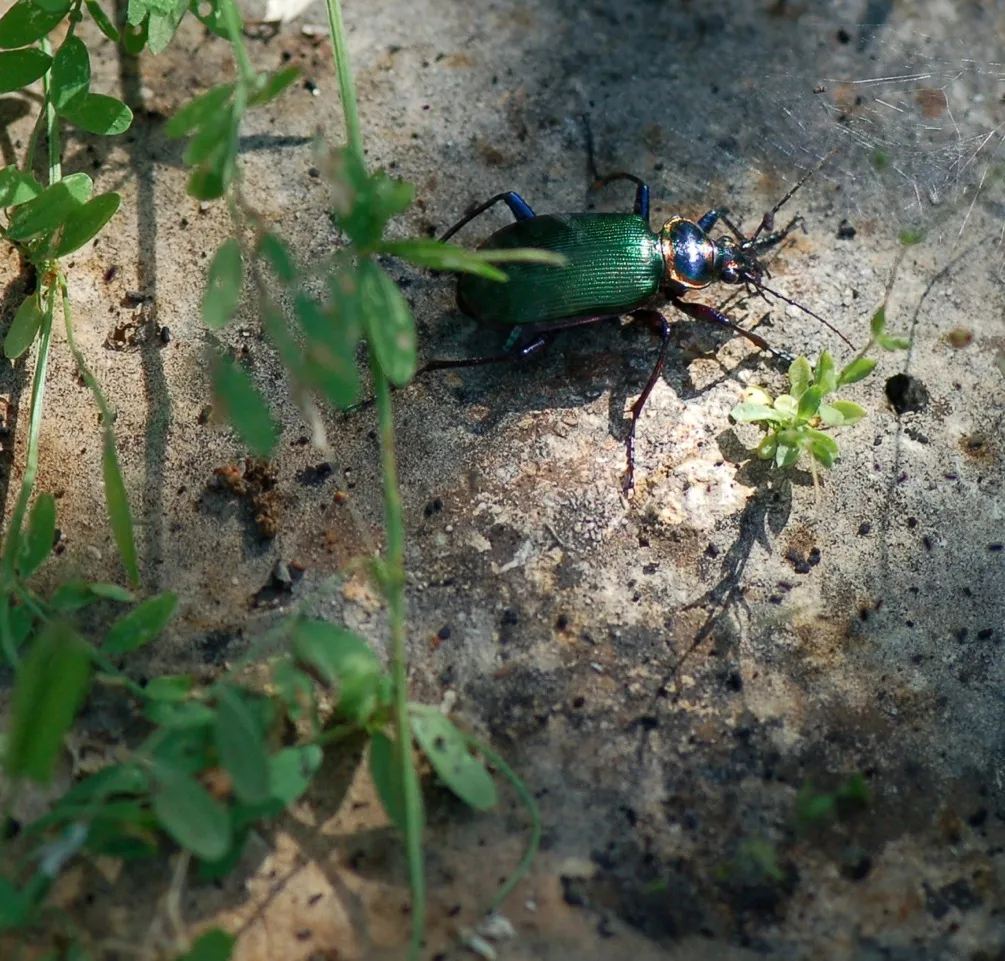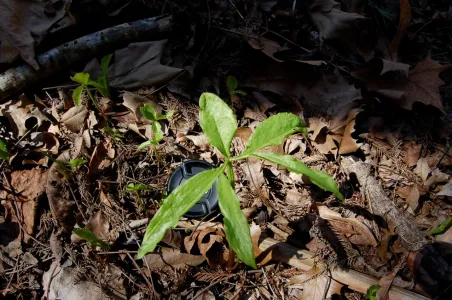By Delmar Cain
My retirement years have been filled with a delightful romp through the wonders of nature. Discovering that the Grote’s Buck Moth (Hemileuca grotei) had a camp on our property turned on another small bulb for me in nature’s big backyard. Obviously I have spent a lot of years stumbling around in the dark.

Adults of this particular moth species begin emerging from their underground pulpal state around the first of November (hence the name “buck” moth). The males troll the area looking for newly emerged females, while the cooperative females announce their presence with pheromones. After mating the female deposits eggs on the host plant (oak). The female may accomplish her chores and live only 24 to 48 hours before dying. The males, which patrol frantically for other emerging females and become increasingly tattered in the process, may live as long as two weeks before they too die. Larvae emerge from the eggs in the spring and grow large on the oak leaves. The lucky ones, that escape from a host of would be predators in the form of insects, spiders, birds and mammals, descend from the tree to pupate underground and emerge as adults in November to repeat the process.
In the great scheme of things what purpose does the Grote’s Buck Moth serve? If none emerged next year or ever, would there be a tiny change, a great change or no affect whatsoever? I doubt that its only purpose is to entertain Texas deer hunters, given that it was probably here when Columbus sailed westward toward the New World. Its larvae would probably not be missed even by the fiery searcher (Calosoma scrutator), which just lives to eat caterpillars—any kind, any type, anywhere.

Because I know far to little about it, I think that I will put Grote’s Buck Moth in the same category as the one-leaf wonder, the green dragon.
Green dragons (Arisaema Dracontium) live along Spring Creek, which runs behind our house. In his book “Wildflowers of the Texas Hill Country,” Marshall Enquist notes that this 1-2 feet tall plant “prefers the shade of moist wooded canyons” and usually has only one compound leaf. But what a strange leaf it is.

Emerging from the ground is a single green leaf stalk or petiole. On the leaf stalk is a single leaf, which may be as large as 12 inches across. The ones that I see are only about 6 inches across. A single leaflet occupies a central position at the top of the stalk with two symmetrical sub-stalks on either side. On each sub-stalk there are 2 to 7 leaflets.
From a botanical point of view this is a single compound leaf.
The leaf stalk is supported underground by a corm, a rounded thick stem base which acts as “vegetative reproductive structure.” It is similar to but not the same as a bulb. The flower of the green dragon is on a flower stalk that is 4-10 inches long. At the top is a light green spathe or split from which emerges a long pale spadix. The peace lily that is found in many floral arrangements has the same floral structure.
I have never found the green dragons along Spring Creek in bloom, nor have I seen the clusters of bright red berries that top the stalks in late June or July. The white tailed deer, the axis deer and the feral hogs are suspects; but I don’t have enough evidence to pin it on any one group.

I only wish that the green dragon contained some or more calcium oxalate crystals, which are found in other members of the Araceae genera. You may be familiar with some of the other members in the Dieffenbachia, the Caladium and the Philodendron groups. The calcium oxalate in the form of raphides or sharp needle shaped crystals, when ingested by an herbivore, cause painful swelling and a stinging and burning to the throat.
So what is the category in which I have placed the Grote’s Buck Moths and the green dragons? In Gilbert and Sullivan’s operetta, The Mikado, the character Ko-Ko, The Lord High Executioner, had a “little list of society offenders who might well be underground and who never would be missed.” But I have my own list of “Those who would be missed” at the very least by me.
In the spring I look for the green dragons and hope one day to see one bloom and bear its red-berry fruit. In the fall I look for the Grote’s Buck Moths with the males zooming around looking for mates. I also keep my eye out for the caterpillars in the spring and hope they make it into the ground alive and well. I even appreciate the fiery searcher in its intrepid search for food.
I hope that you have your own buck moths, dragons and searchers to enjoy. If you don’t have them now, just go outside and look. They are there now, waiting to be found.
